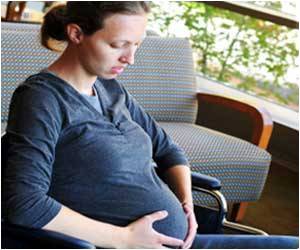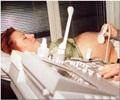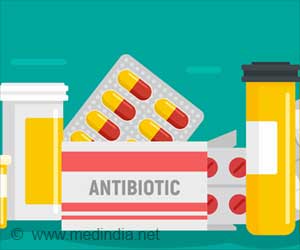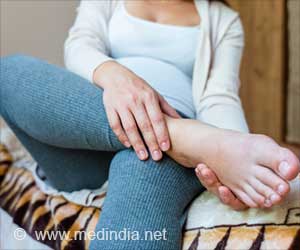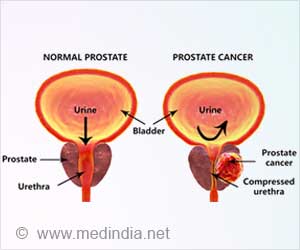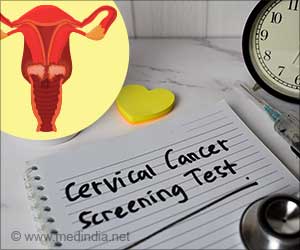- Though postpartum depression and anxiety affect 1 in 10 women, they are often overlooked and under-reported.
- They are treated as extensions of major depression and generalized anxiety disorder.
- A new study states that despite the common symptoms of PPD and other forms of depression the underlying mechanisms are different.
- Neural activity in women with PPD involves distinct pattern in comparison with those who suffer from depression but have not given birth.
Postpartum Depression
Postpartum depression is depression that occurs after having a baby and affects 1 out of 10 mothers.
In developed countries, at least 10%-15% of women are faced with PPD. In developing countries, the rates of postpartum anxiety appear to be at least as high as those in developed nations and PPD can be two to three times higher than in industrialized countries.
New mothers struggling with PPD are often detached or withdrawn from family and friends, lose their appetite, feel sad, angry and irritable much of the time.
It is different from "baby blues " which most new mothers experience. "Baby blues" are characterized by symptoms of worry, sadness, and tiredness. It usually resolves on its own.
Postpartum depression is more intense and lasts longer than those of “baby blues."
These early interactions with the newborns are important and can lead to long-term behavioral problems for the children when they are older.
The annual cost of not treating a mother with depression, is estimated to be $7,200.
Despite the increased prevalence of both PPD and postpartum anxiety and pervasive costs for the mother and developing child, very few clinical studies offer an understanding of the neural bases of postpartum emotional and mood disorders.
Differences in Neural Activity
Postpartum depression does not have any diagnostic criteria and its symptoms often resemble other forms of depression or mood disorders.
It is difficult to assess the precise rates of postpartum anxiety and depressive disorders due to the heterogeneity of the disorders, differences among studies in their research populations, and an overall lack of screening for psychiatric symptoms in postpartum women.
In the research, psychologists explore the neurobiology of postpartum depression and anxiety.
"Motherhood really can change the mother, which is something we often overlook. And we forget about examining the neurobiology of maternal mental health and maternal mental illness, particularly anxiety," says behavioral neuroscientist Jodi Pawluski of University of Rennes 1 in France, who co-authored the paper with Joseph Lonstein of Michigan State University and Alison Fleming of the University of Toronto at Mississauga.
To study the brain systems involved in affective disorders in women during late pregnancy through to 18 months postpartum, two general research strategies involving the safe and non-invasive functional magnetic resonance imaging (fMRI) approach have been used.
Analyzing Resting State Activity
The first strategy involves analysis of women's brain resting state, or the brain activity that occurs in the absence of any specific external stimulation.These analysis focus on brain systems that characterize depression, including those involved in self-awareness, emotional regulation, and cognitive functioning in the absence of cues.
It was noted that at rest, women who had both PPD and postpartum anxiety had decreased neural connectivity.
These women with PPD showed significantly weaker connectivity between the amygdala (AMG), anterior cingulate cortex (ACC), dorsal lateral prefrontal cortex (DLPFC), and the hippocampus compared with non-depressed postpartum women.
Analyzing Brain Response to Infant and Non-infant Cues
The second strategy involves using fMRI to investigate differences in mothers’ brain in response to infant and non-infant cues.The goal was to understand both the neurobiology of PPD and postpartum anxiety and how they alter neurobiological correlates of maternal response to infants.
The analysis revealed that neural activation between depressed and non-depressed mothers also differs in response to infant and non-infant related cues.
The activity in a specific brain region will increase in response to a non-infant emotional cue, but decrease in response to an infant-related emotional cue.
For instance, the amygdala is usually hyperactive in anxious and depressed people, but for the women with PPD, the amygdala can actually be less activated.
These results collectively suggest that mood disorders during the postpartum period are neurobiologically distinct from these disorders at other times in one's life.
Conclusion
PPD is now listed as perinatal depression, a subset of major depression in the Diagnostic and Statistical Manual of Mental Disorders (DSM-5). DSM-5 is the text which sets industry standards for diagnosing mental conditions.But postpartum anxiety, though as prevalent as PPD is not included at all in the DSM-5. Despite affecting 1 in 7 new mothers postpartum anxiety receives far less attention in the literature.
"When we talk about the neurobiology of postpartum depression and anxiety, our information from the studies done on humans is only comprised of about 20 papers," says Pawluski.
"If you think that 10%-20% of women during pregnancy and the postpartum period will suffer from depression and/or anxiety, and then you realize there are only 20 publications looking at the neurobiology of these illnesses, it's quite shocking." Pawluski added.
Pawluski described new parenthood as, "It's a life changer. It's fantastic, terrifying, amazing, frustrating, exhausting, thrilling, and everything in between. It is not always a happy time, and we need to understand that, talk about it, and figure why it can trigger mental illnesses in so many women. If we can improve the health and well-being of the mother, we will improve the health and well-being of the child and family."
Though PPD and postpartum anxiety affect nearly 1 in 10 women, they are often treated as extensions of major depression and generalized anxiety disorder, respectively.
The condition can be further complicated by the reality and expectations where women are expected to enthusiastically embrace their new motherhood, but they are unable to.
Another major problem is that sometimes the social stigma associated with mental disorders prevent many women with postpartum mood disorders from discussing their issues openly with health care providers and hence their condition remains largely under-addressed.
Though information on changes in activation in brain regions can be studied using fMRI, which helps in detecting changes in blood flow, continued research is needed for postpartum anxiety and depression to determine the mechanisms behind the neurobiological patterns.
The understanding of neurobiological pattern of maternal mood disorders will help in developing effective and safe treatment approaches, thus improving the health and well-being of the mother and child.
The review is published in Trends in Neurosciences
References:
- Jodi Pawluski et al. The Neurobiology of Postpartum Anxiety and Depression. Trends in Neurosciences ; (2017) doi.org/10.1016/j.tins.2016.11.009
- Depression Among Women - (https://www.cdc.gov/reproductivehealth/depression/)
Source-Medindia



